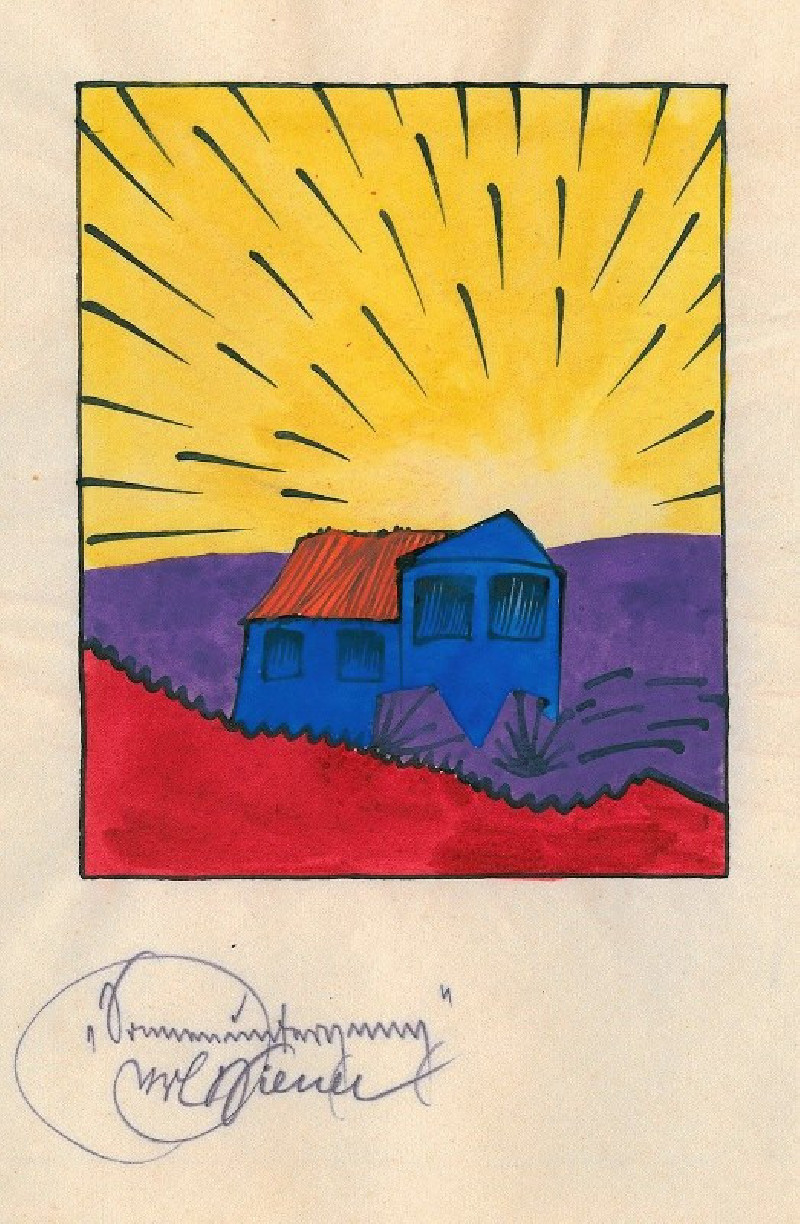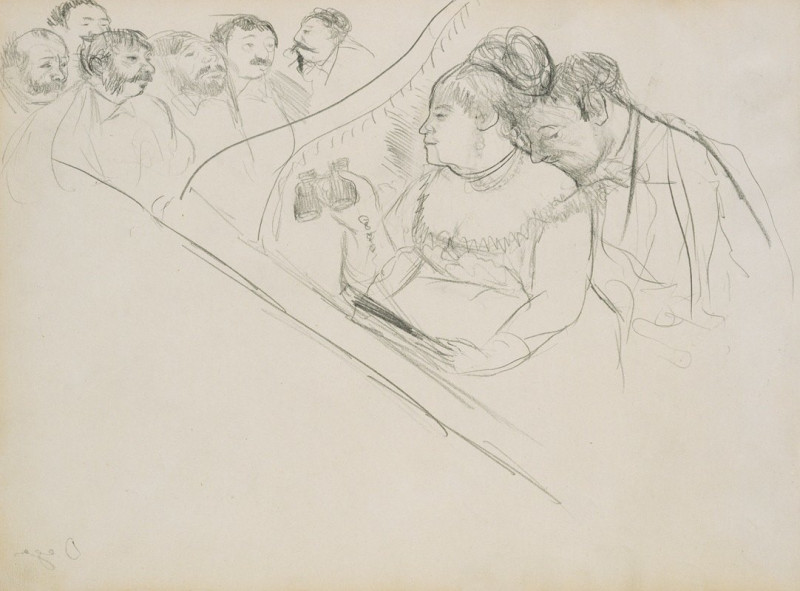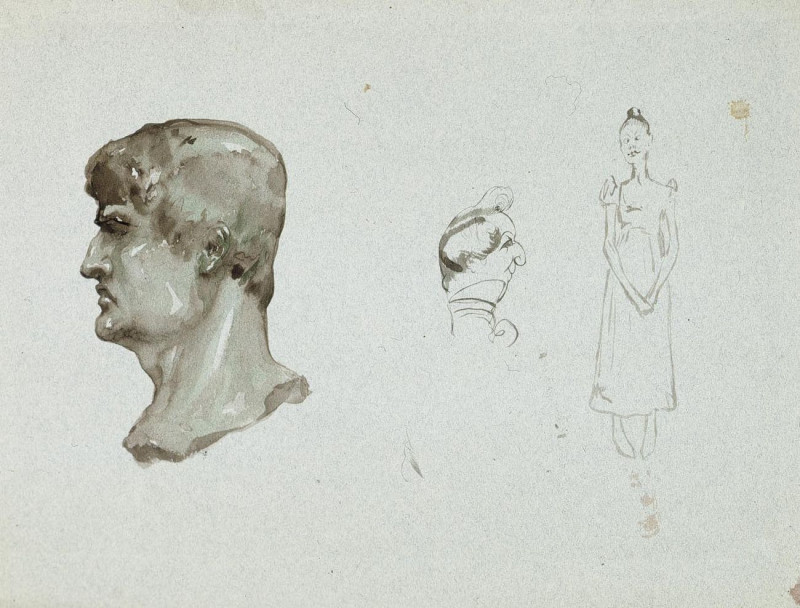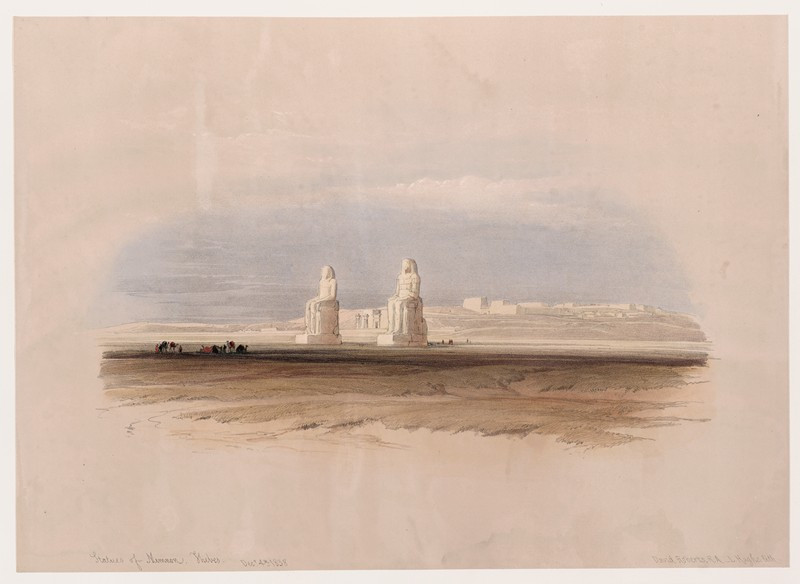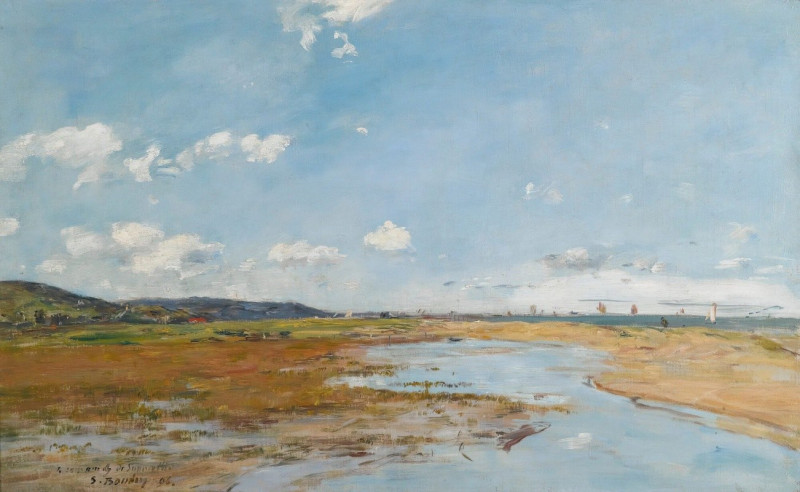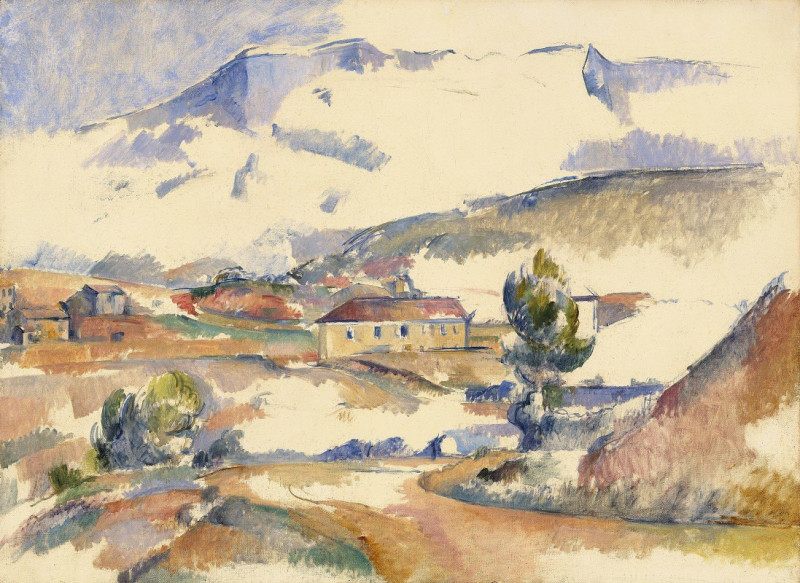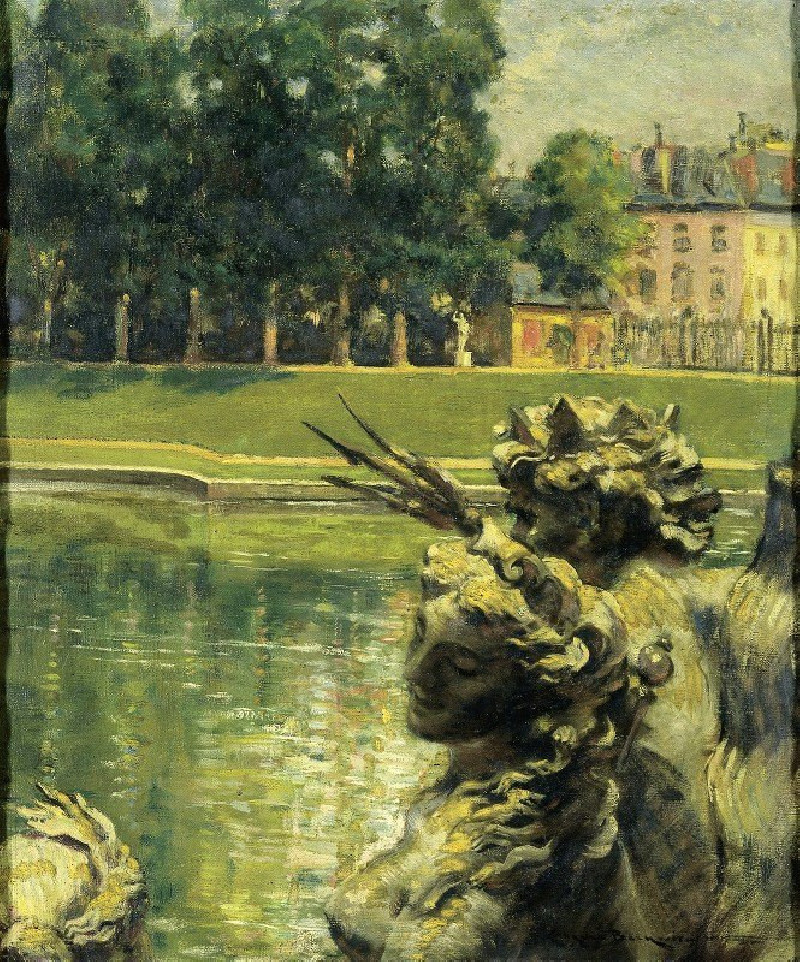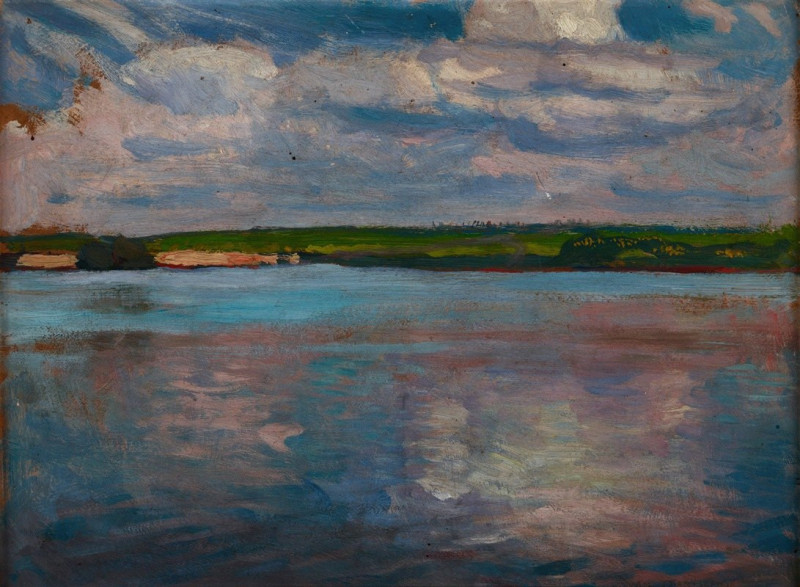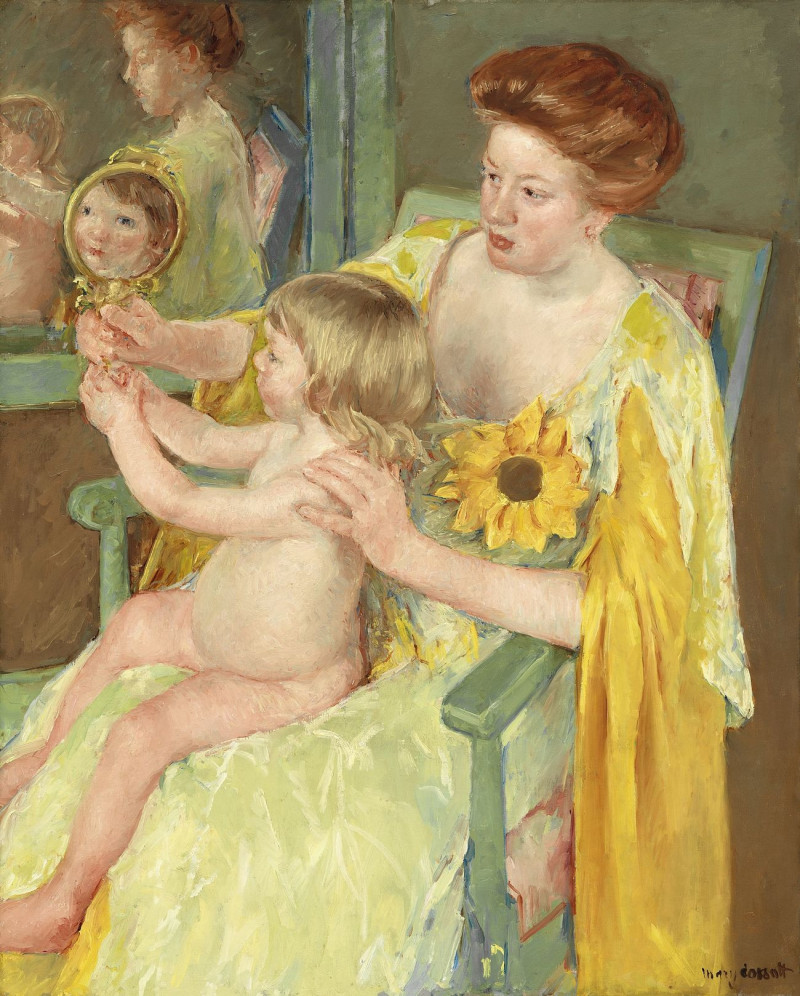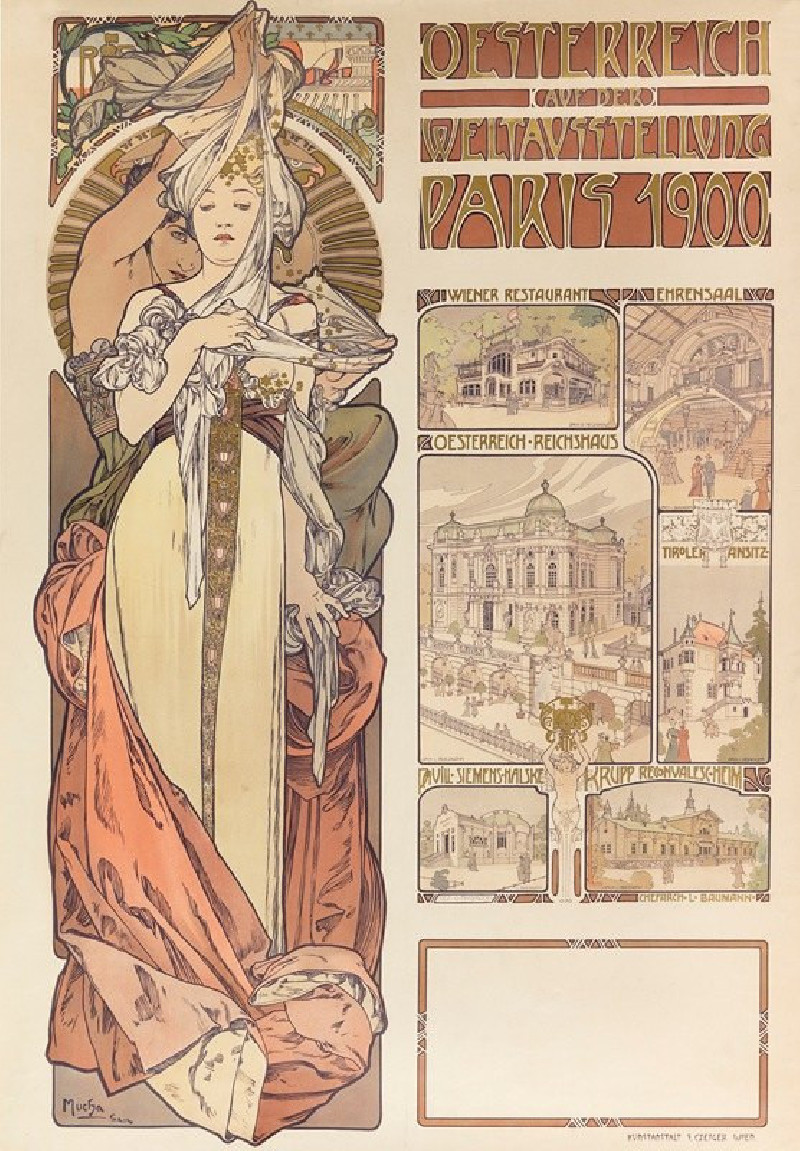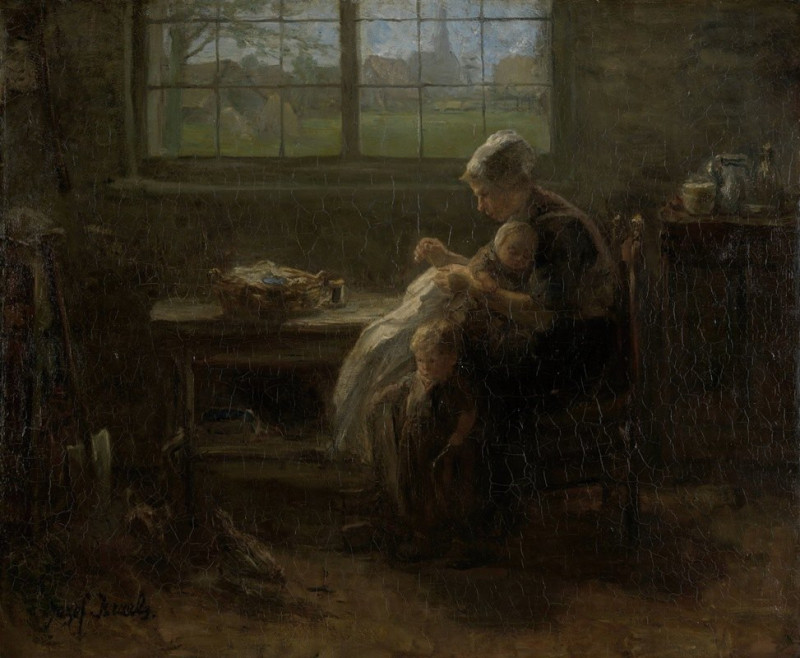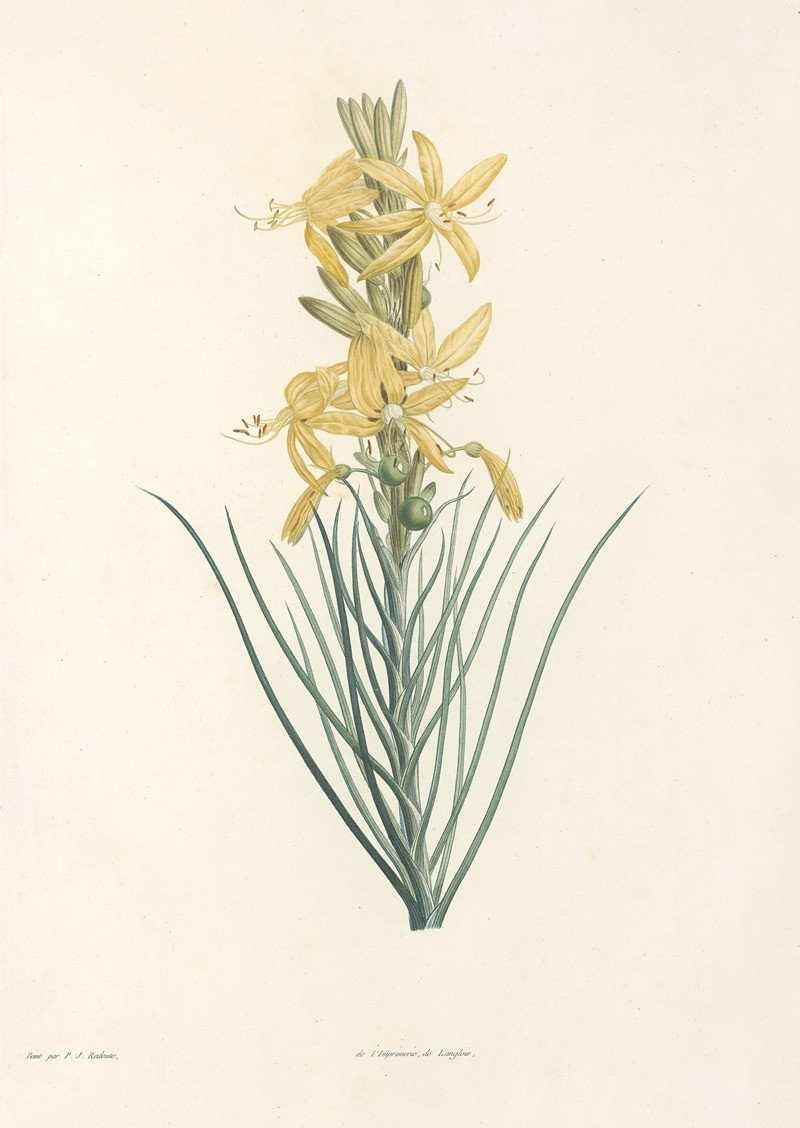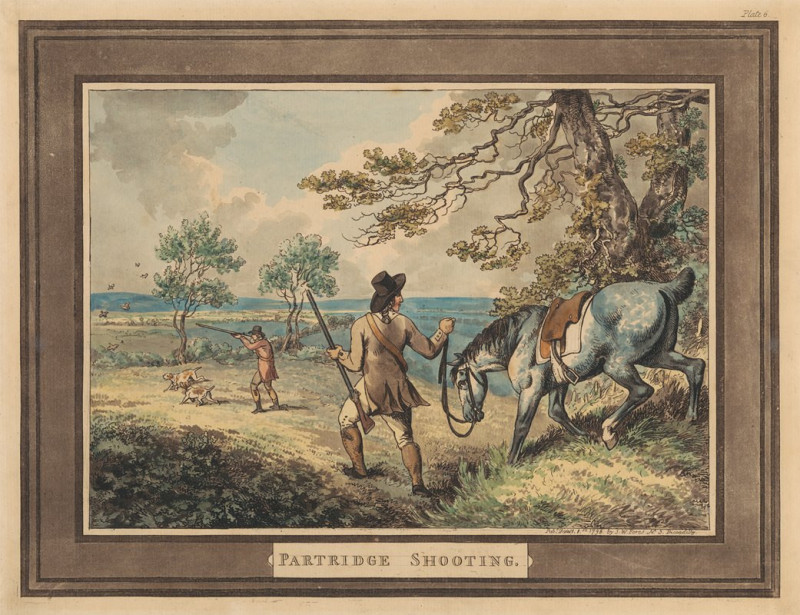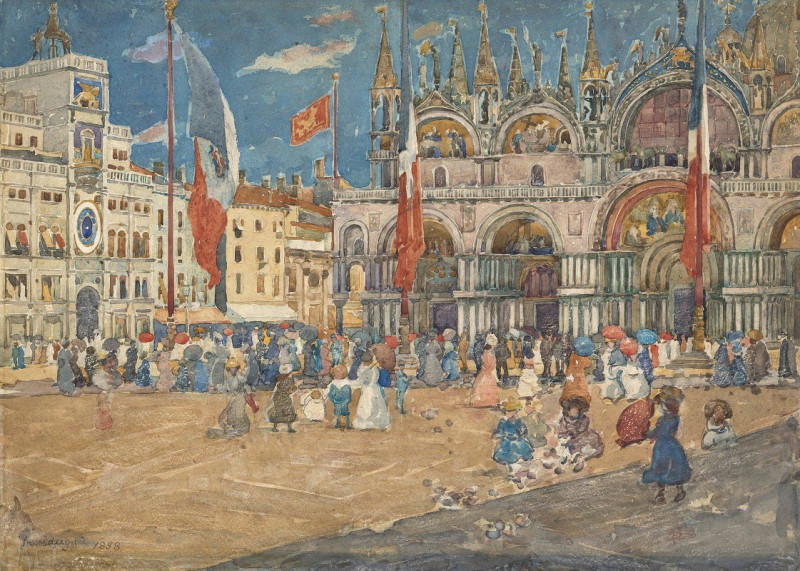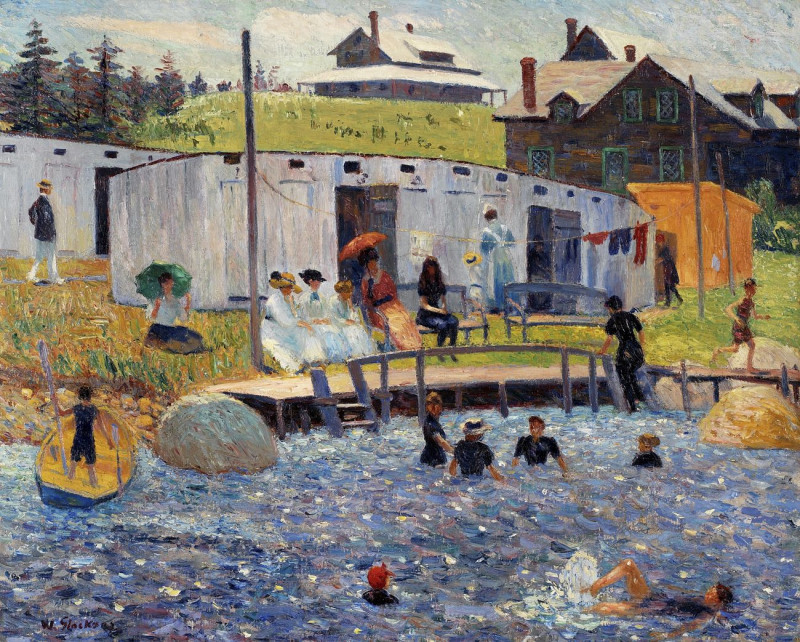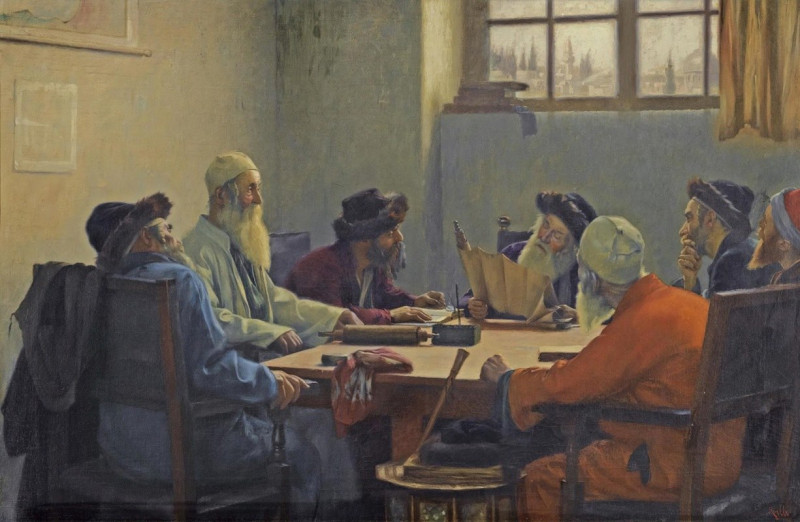Sonnenuntergang (around 1921)
Technique: Giclée quality print
Recommended by our customers
More about this artwork
"Sonnenuntergang," translating to "Sunset" in English, is a captivating piece by Austrian artist Karl Wiener, crafted around 1921. This painting is a vibrant exploration of color and simple forms, delivering a rich visual experience. At the heart of Wiener's composition is a quaint, stylized blue house with a striking orange roof, situated amidst a vivid landscape. The background unfolds in layers of deep purple and bold red, suggesting a lively yet serene twilight.Dominating the skies above the serene landscape is a radiant, expansive sun, depicted through dynamic yellow rays bursting across the canvas. This element not only highlights the sunset theme but also infuses the scene with a sense of energy and movement. The use of strong, contrasting colors and straightforward geometric shapes makes "Sonnenuntergang" an exceptional example of early 20th-century expressionism.This piece reflects Wiener’s unique ability to blend simplicity with profound emotional depth, making "Sonnenuntergang" not just a mere depiction of a sunset, but a profound celebration of nature’s daily spectacle.
Delivery
Reproductions are made to order and take 5 to 7 working days.
We send them out by courier and delivery takes another two working days.
If you need a reproduction sooner, please contact us - we can usually find a solution and produce it a little faster.
If you don't want to pay for postage, you can pick up your paintings at our galleries in Kaunas or Vilnius.
Returns
Yes, reproductions can be returned.
If you have any doubts more than 30 days after the date of purchase, please contact us - we will take the reproduction back for a refund or offer you a replacement!
We accept a maximum of two returns per customer - please note that we make reproductions to order, so please choose responsibly.
We do not refund shipping expenses.

